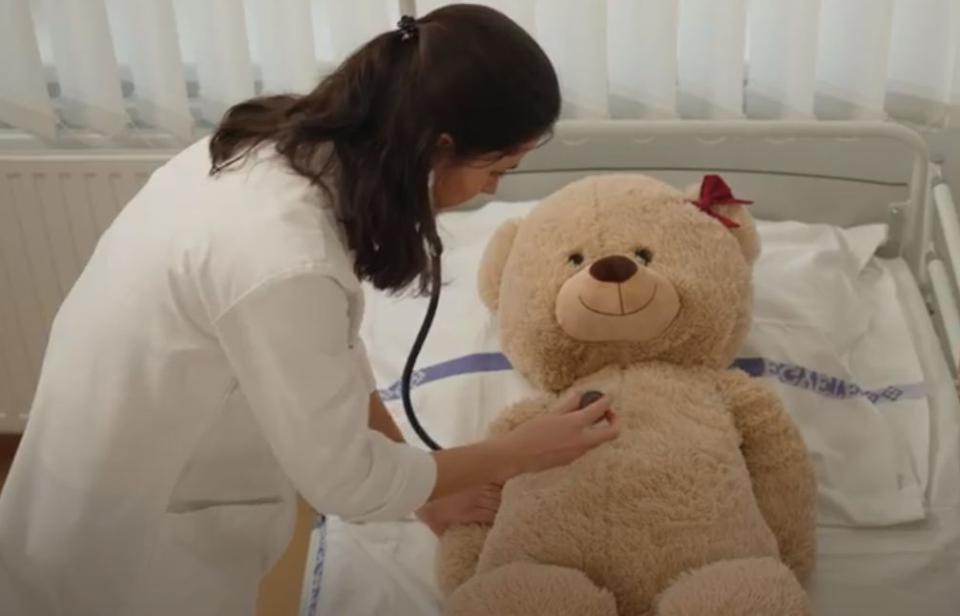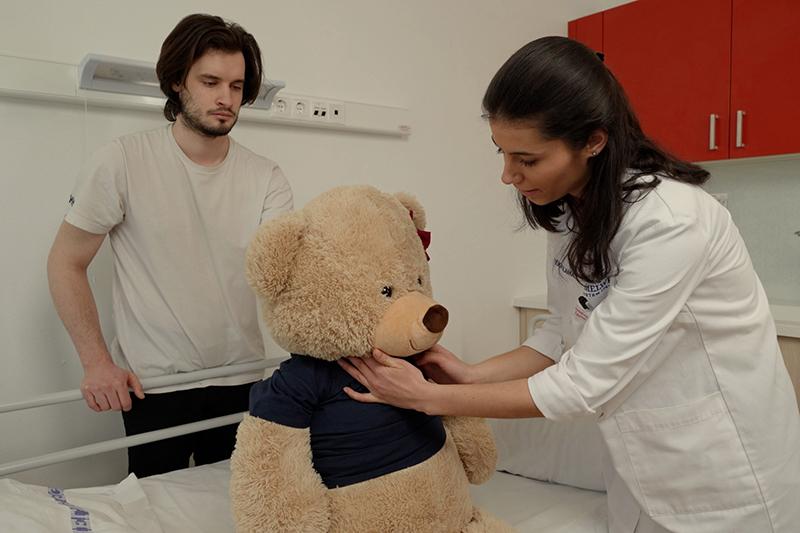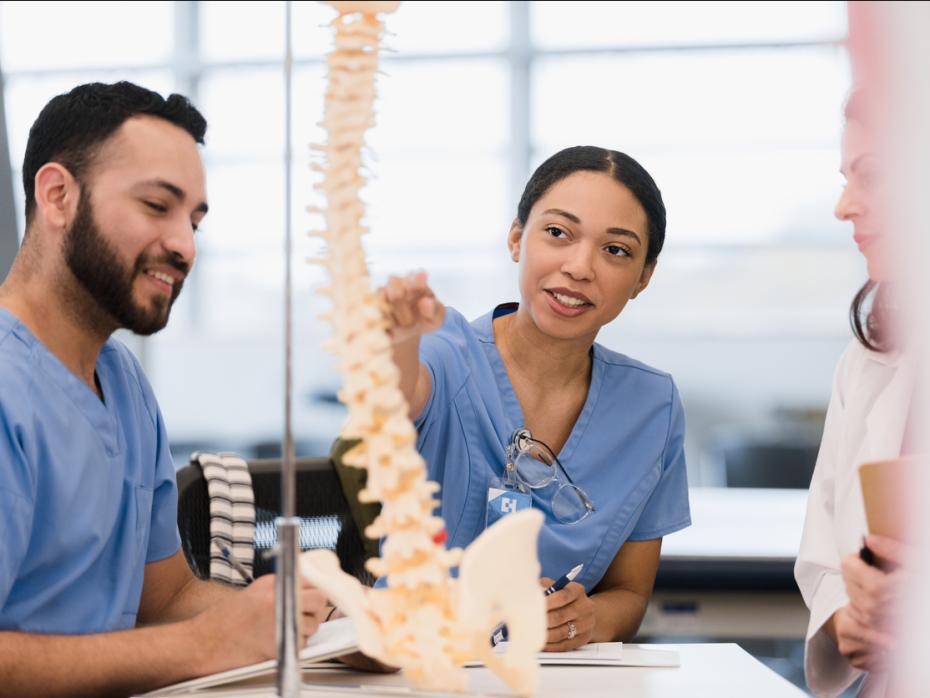Why do international students come to Semmelweis University to study medicine? Obviously, not to learn Hungarian.
Semmelweis University, with a history spanning more than 250 years, boasts a practice-oriented curriculum, with 40 years’ experience in foreign-language (English and German) training programmes.
In 2019, the university implemented a comprehensive reform of the clinical curriculum, prioritising hands-on clinical training to equip students with the skills to participate in clinical work successfully right after graduation. This practical phase starts in the third year of study, highlighting the urgency of preparing students for effective clinical communication. Yet, it is imperative to recognise that this journey unfolds in Hungary, where most patients are Hungarian.
Linguistic challenge in teaching and practising patient care
The patients predominantly hail from rural backgrounds, are often of advanced age and can possess minimal to no knowledge of foreign languages. Furthermore, they exhibit limited familiarity with medical terminology and – although the Hungarian language almost always has a lay equivalent of medical terms – on occasions, they struggle with lay terms as well. For example, when asked: “Do you feel dizzy?”, they might say: “No, my head is just pulling me to the side.”
- A checklist for advancing equity, diversity and inclusion in medical sciences and education, part one
- Social justice as part of medical education
- Creating a bioscience toolkit for first-year students
In view of these challenges, the central focus of teaching clinical communication skills to international medical students revolves around the integration of language acquisition with clinical activities. However, with only four semesters for instruction, primarily focused on subjects of basic theoretical sciences, a conventional approach is impractical. For this reason, we apply the content and language integrated learning (CLIL) methodology, which focuses on integrating language acquisition with content and activities relevant to medical practice instead of concentrating on general language.
A strategic approach to acquiring language in practical contexts
Traditionally, the sequence of language acquisition prioritises general language proficiency before delving into the terminology associated with specific professions. This approach, however, consumes a substantial amount of time – time that is scarcely available. The Hungarian language, characterised by agglutination and complex grammar structures, poses additional obstacles.
Consequently, a distinctive strategy was adopted, resembling the natural acquisition of a first language, where language is acquired through associations with activities and the observation and repetition of practical contexts.
Year one: history taking and focused understanding
In the first year of their medical training, we teach students to ask differential-diagnostically relevant questions so they can lead the conversation with patients. For this, we have used a “learning by modelling” method with the following steps:
First, we conducted a needs analysis with clinicians in the form of oral interviews.
Next, we audio-recorded authentic Hungarian doctor-patient examinations as well as Hungarian medical student-patient dialogues at the university clinics to create a pool of everyday patient narratives that, when acquired, will prepare students to conduct doctor-patient dialogues in clinical practice. The scripts of these audio materials are re-recorded didactically and used in class to be reproduced with the help of the instructor or teaching assistant (TA) who has been trained to play the part of the patient.
To enhance the learning-by-doing approach, in collaboration with a Budapest theatre, we recorded four short films featuring authentic doctor-patient dialogues with actors playing patients and upper-year students as doctors taking medical history. This way, students are placed in a clinical setting that they have not yet experienced in real life. So, history-taking skills are taught to students first in Hungarian before they start the block-based clinical education.
Year two: patient examination and information delivery
During the second year, next to practising more detailed history-taking, students learn how to conduct physical examinations and provide information. Importantly, this is approached not as clinical-skill acquisition but as language-skill development. We created modelling audio-visual material in which a medical student conducts examinations on a plush bear as a patient (animated by a student – see below) so that terminology and vocabulary can be connected to an activity.

As teaching material, students receive the scripts of the dialogue recorded at the university clinics complete with a set of illustrations (created by an artist), which serve as comprehensive guides to recreate the instructions as well as informing the patient about the next step during an examination.
Measuring progress
At the end of the fourth semester, students take a final exam, in which the examiner assumes the authentic role of the patient and the student is asked to take a medical history and act out a patient examination.
As a result, at the start of their block-based clinical education, students are able to:
- take a medical history of a Hungarian patient (ask differential-diagnostically relevant questions, lead the conversation and understand relevant content) and summarise the acquired information in the language of their training
- dispense information and provide instructions related to physical examinations, with the help of visual aids
- extract anamnestic data and discern the course of the disease from Hungarian medical records and summarise them in the language of their training.
Semmelweis University’s approach to teaching clinical communication skills to international medical students aligns language acquisition with practical medical activities. Integrating language and clinical practice better equips students to navigate the challenges posed by Hungarian-speaking patients, ensuring effective communication and compassionate care from the start of their clinical practice. This new language curriculum ensures equally high-quality clinical training in both the Hungarian and international training programmes, allowing international students to participate efficiently in practice-oriented clinical education despite intercultural differences.
Katalin Fogarasi is an associate professor and director of the Institute of Languages for Specific Purposes, and Judit Császár is an instructor of English for specific purposes and vice-director for operative management at the Institute of Languages for Specific Purposes, both at Semmelweis University, Hungary.
If you would like advice and insight from academics and university staff delivered direct to your inbox each week, sign up for the Campus newsletter.




comment